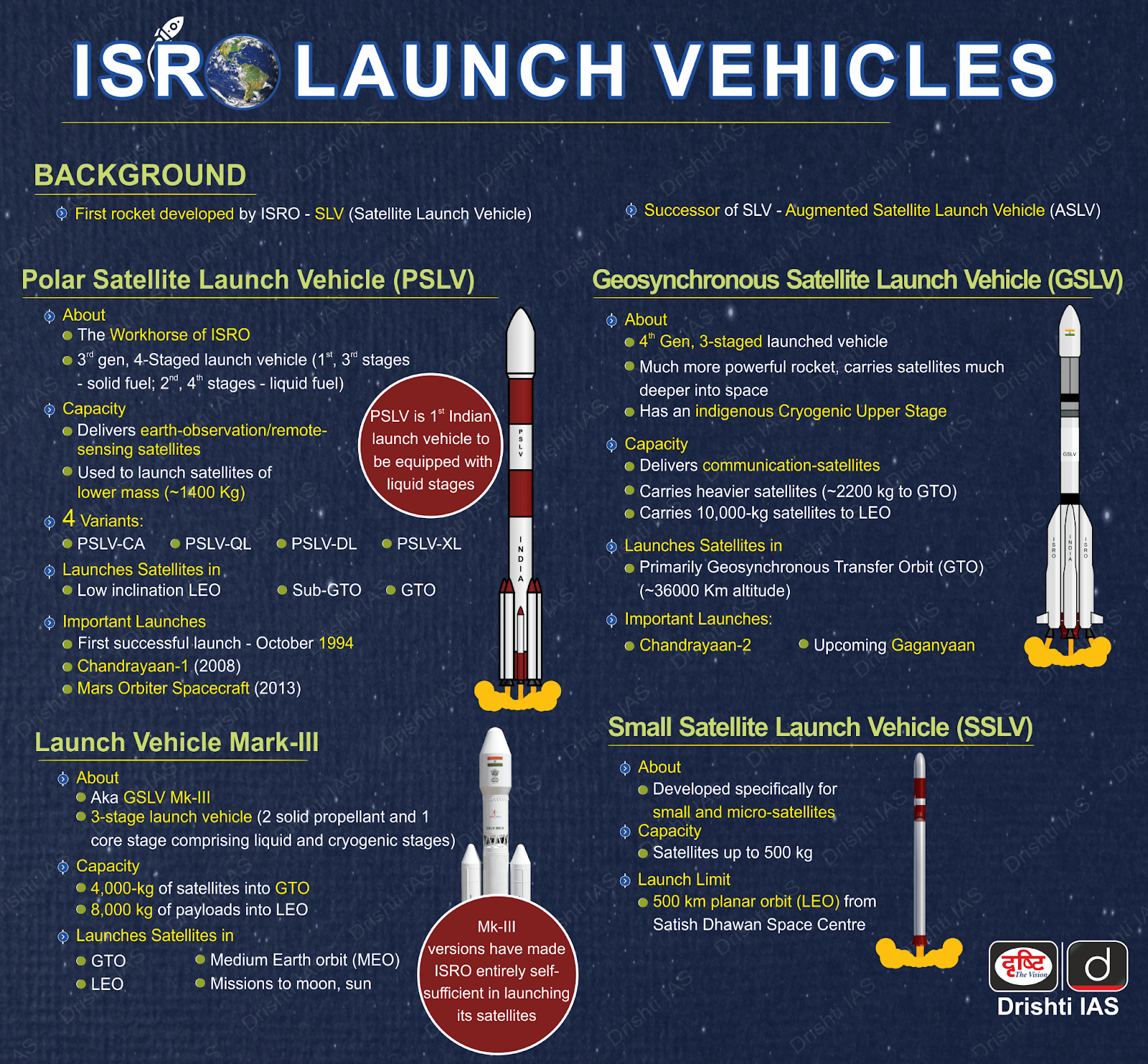Important Facts For Prelims
PSLV-C61/EOS-09 Mission
- 19 May 2025
- 5 min read
ISRO’s Polar Satellite Launch Vehicle (PSLV-C61) mission failed to place the Earth Observation Satellite-09 (EOS-09) into its intended sun-synchronous polar orbit due to a glitch in the rocket’s third stage.
- This was ISRO’s 101st mission and the 63rd using the PSLV. The EOS-09 satellite carried a Synthetic Aperture Radar (SAR) payload designed to capture all-weather Earth images.
Note
- A sun-synchronous polar orbit (SSO) is a polar orbit where a satellite passes over the same Earth location at the same local solar time each day, maintaining a consistent position relative to the Sun.
What is PSLV?
- About: The Polar Satellite Launch Vehicle (PSLV) is a highly reliable and cost-effective launch vehicle developed by ISRO.
- It is used to transport satellites into various orbits, including sun-synchronous, geostationary, and navigation orbits.
- Function: It carries satellites (payloads) into space, overcoming Earth's gravity through powerful propulsion systems. Once the desired orbit is reached, satellites are deployed from the vehicle.
- Structure: PSLV has 4 stages:
- PS1: Solid rocket motor with 6 strap-on boosters.
- PS2: Liquid engine (Vikas engine).
- PS3: Solid rocket motor for high thrust post-atmospheric phase.
- PS4: Two liquid-fuel engines for final orbital insertion.
- Variants: PSLV-XL (with extended strap-ons), PSLV-DL, PSLV-QL, etc., are selected based on payload weight and target orbit.
- Significance: Known as ISRO’s “workhorse” due to its versatility and high success rate.
- Used in major missions like Chandrayaan-1 (2008) and Mars Orbiter Mission (2013).
- Achieved global recognition by launching 104 satellites in a single mission (PSLV-C37, 2017).
- Earlier Failure: The PSLV has failed twice in its history. The first failure was in 1993 (PSLV-D1) due to software issues, causing the IRS-1E satellite to crash into the ocean.
- The second was in 2017 (PSLV-C39), when a heat shield separation failure trapped the IRNSS-1H satellite, preventing its deployment into orbit.
What is Earth Observation Satellite-09 (EOS-09)?
- About: EOS-09, also called RISAT-1B, is an advanced Indian remote sensing satellite equipped with a C-band Synthetic Aperture Radar (SAR) for all-weather, day-and-night Earth imaging.
- It is designed for diverse applications including land-use mapping, hydrology, disaster management, agriculture, forestry, and coastal security.
- Key Features:
- All-weather capability: SAR penetrates clouds, rain, fog, and darkness, ensuring continuous surveillance.
- High resolution: Offers up to 1-meter resolution and wide swath coverage (10 to 225 km).
- Multiple Imaging modes: Supports five modes like High-Resolution Spotlight and Medium Resolution ScanSAR for varied uses.
- Dual-use: Supports both civilian applications and defence surveillance, including monitoring military activity and maritime security.
- Orbit: Intended for a sun-synchronous polar orbit for consistent daily coverage.
UPSC Civil Services Examination, Previous Year Question (PYQ)
Q. With reference to India’s satellite launch vehicles, consider the following statements: (2018)
- PSLVs launch the satellites useful for Earth resources monitoring whereas GSLVs are designed mainly to launch communication satellites.
- Satellites launched by PSLV appear to remain permanently fixed in the same position in the sky, as viewed from a particular location on Earth.
- GSLV Mk III is a four-staged launch vehicle with the first and third stages using solid rocket motors, and the second and fourth stages using liquid rocket engines.
Which of the statements given above is/are correct?
(a) 1 only
(b) 2 and 3
(c) 1 and 2
(d) 3 only
Ans: (a)







